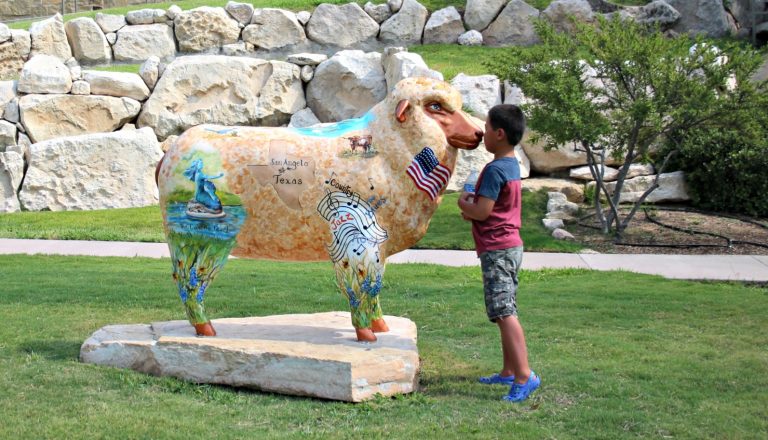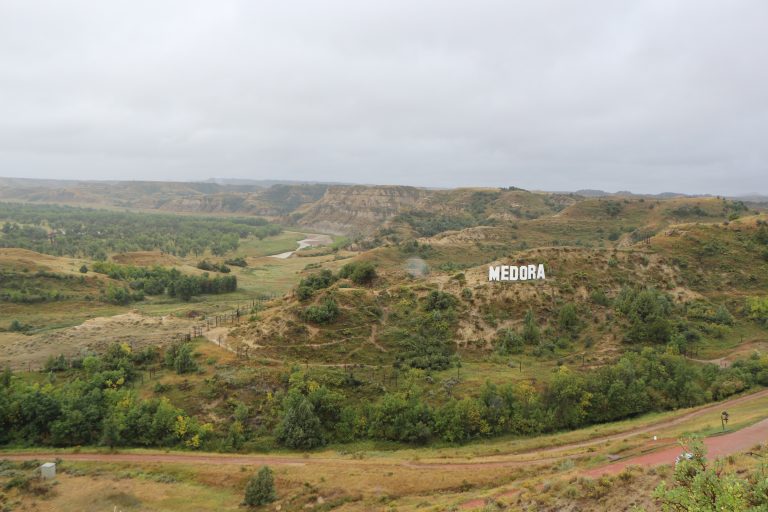The 4-1-1 On TSA’s 3-1-1 Rule – Everything You Need To Know
If you're flying with liquids then you need to thoroughly understand TSA's 3-1-1 Rule. How many ounces can you take on a plane? What counts as a liquid? Are there special rules for baby formula or medication? Here's the 4-1-1 on the 3-1-1 – everything you need to know about navigating TSA in the United States.
Everything You Need to Know About TSA's 3-1-1-Rule

All the useful travel tips in the world, such as how to snag the best deals on flights to how to choose the right luggage for your trip are going to fall flat if getting through airport security is a nightmare.
The name of the game is getting through airport security without a TSA Agent confiscating your toothpaste or lip gloss. Here are the basics on what gets through and what doesn't and the amount of liquid it's OK to have when you're going through the screening process.
First, Know the Rules Are Nitpicky
Passenger safety is the reason behind the strict rules at airport security checkpoints. The Transportation Security Administration (TSA) has strict guidelines on the amount of liquids that can be carried onto a plane.
According to TSA rules, you can bring a quart-sized bag of liquids, aerosols, gels, creams, and pastes in your carry-on bag. Each container of liquid must be 3.4 ounces (100 milliliters) or less. This includes toiletry and personal care items like shampoos, lotions, and perfume sprays. These guidelines apply to all liquids, regardless of whether they are in a bottle, tube, or other container.
You might also like: Safety Tips For Solo Travelers
All About The Liquids Rule
You are allowed to bring a quart-sized clear bag of liquids, aerosols, gels, creams, and pastes in your carry-on bag and through the airport security checkpoint. These are limited to travel-sized containers that are 3.4 ounces (100 milliliters) or less per item.
This will meet most passengers' needs for a quick trip or freshening up during a long-haul flight.
Peanut butter is considered a liquid by TSA, so whether you’re toting individual packets of peanut butter or a PB&J to eat for later, understand that this counts toward your allotment of liquids.
The 3-1-1 Rule Explained

When preparing for air travel, remember the 3-1-1 rule. Each liquid you bring through the TSA checkpoint must be in a 3.4 fluid ounces or smaller container (“3”), all containers must be placed inside one clear quart bag (“1”) and each passenger is only allowed one plastic bag (“1”).
One of the ways to make compliance with the 3-1-1 rule easy is to use travel or trial or travel size toiletries, usually easy to find at drug and grocery stores. If you use a lot of cosmetics or want to travel with full-size shampoo and conditioner so you don't have to use what's in your hotel, the 3-1-1- rule might be more difficult for you to follow.
If you don’t follow the rules, you’ll be subject to additional screening by TSA security officers, which will often result in delays, for you and other passengers. No one wants to be stuck in line behind the person who tried to sneak a 12-ounce bottle of conditioner through security.
Rules for Lighters
You can only carry one lighter on board. You should put it inside a resealable plastic bag (like the ones used for liquids), which you must keep on you throughout the flight.
Rules for Baby Formula
If you are traveling with a baby or small child, you are allowed to bring baby formula or breast milk in reasonable quantities that exceed the 3.4-ounce limit in your carry-on luggage.
If you are traveling with baby formula, let the TSA officer know in advance that you're coming through with larger quantities of liquids.
Rules for Freezer Packs
Frozen liquid items are allowed through the checkpoint as long as they are frozen solid when presented for screening. If frozen liquid items are partially melted, slushy, or have any liquid at the bottom of the container, they must meet 3-1-1 liquid requirements.
If you are traveling with medically necessary ice packs, let the TSA officer know in advance that you're coming through with larger quantities of liquids.
TSA Liquids Policy: Liquids Vs. Powders
The TSA considers liquids to be any pourable substance, Items not considered liquids include powders, such as talcum powder, face powder, and coffee or tea. TSA requires you to place powders in a clear, plastic, sealable bag and place them in your carry-on bag for inspection.
Packing Liquids In Your Carry-On Baggage
Make sure you pack your liquids to avoid spills or leaks. Here are some tips on how to pack liquids in your carry-on bag:
- Use a clear, plastic, sealable bag to hold your liquids. This will make it easier for TSA agents to inspect your items.
- Make sure all your containers are 3.4 ounces or less. If you have larger containers, transfer the contents to smaller, travel-sized containers. These are readily available on Amazon or in most drug/beauty stores.
- Place the bag of liquids in an easily accessible place in your carry-on bag. This will make it easier to remove the bag for inspection at security checkpoints.
If you have TSA PreCheck, you will be allowed to leave your bag of liquids inside your carry-on bag when it goes through security.
Packing Liquids In Your Checked Luggage
If you want to bring liquids, toiletries, food items, baby food, your full-size bottle of perfume, or hand sanitizer, over 3.4 ounces, put those in your checked luggage. Just make sure to seal them properly in a plastic bag in case the caps come loose during your flight.
There is no TSA liquid limit for liquids in checked baggage.
Flying With Alcoholic Beverages
Want to bring alcohol on the plane? You can. For carry-on, you are limited to containers of 3.4oz or less that can fit comfortably in one quart-sized, clear, zip-top bag.
If you have anything larger than that, you’ll need to make arrangements to check your bag when you check in for your flight. If you buy alcohol at the duty-free shop, you’re already inside security, so the rules probably don’t apply. You’ll still have to adhere to your airline’s rules, which generally include no drinking alcohol you bought inside the terminal on the airplane.
What You Cannot Bring On a Plane
The TSA bans liquids that could make people sick if opened or spilled. If you think it might be a good idea to pack bleach or other cleaning products, stop right here.
Insecticides, gasoline, or any type of flammable liquids are also prohibited. If you’re in doubt about whether you should pack something in your carry-on, check the TSA website before packing it.
The Bottom Line

The most important thing to remember is that TSA allows a quart-sized bag of liquids, aerosols, gels, creams, and pastes in your hand luggage. Each container of liquid must be 3.4 ounces or less. If you think you have an exemption or exception, research it before you get to the airport.
FAQs About TSA's 3-1-1 Liquids Rule
Still have questions? Here are a few common questions broken down?
How many TSA 3-1-1 bags can you take on a plane?
Does mascara count as a liquid?
Mascara is considered a liquid, as is anything deemed spreadable.
Can I film or take photos at the TSA Security Checkpoint?
First, make sure you heed the directions in any posted signage. If you see a sign that says “No filming” or “No pictures” then there's your answer. Here's what TSA's website says on the topic:
“TSA does not prohibit photographing, videotaping, or filming at security checkpoints, as long as the screening process is not interfered with or sensitive information is not revealed. Interference with screening includes but is not limited to holding a recording device up to the face of a TSA officer so that the officer is unable to see or move, refusing to assume the proper stance during screening, blocking the movement of others through the checkpoint or refusing to submit a recording device for screening.”
What's the process for taking pets through TSA security?
First, make sure you do your homework on anything related to traveling with pets to make sure you have all of your ducks (or cats or dogs) in a row before your day of travel.
If you're taking your pet through security you will be required to remove the pet from the carrier and run the carrying case through the security X-ray machines. The pet will go through the X-ray machines under the control of the owner.
Can I pack food in my carry-on?
Yes, but remember all food must undergo x-ray screening. Foods that are liquids, gels, or aerosols must comply with the 3-1-1 liquids rule, so maybe rethink that peanut butter sandwich. Most pre-packaged non-perishable snack foods, such as protein bars, beef or turkey jerky, or packaged cookies and crackers should easily pass through.
If you're traveling internationally, be wary of taking fruits, vegetables, or anything that might be considered an agricultural product in your hand luggage. TSA officers make the final decision on whether certain items are permitted into the secured areas of the airport.
What are TSA's most commonly confiscated items?
Typically, TSA confiscates liquids that exceed the 3.4-ounce rule that people have forgotten about, such as toothpaste, sunscreen, or shampoo. Forgotten water bottles and pocket knives that are considered weapons also make the list.
If you're traveling as a family, it's a good practice to check everyone's carry-on bags, especially if you're not used to traveling. A non-seasoned traveler might think nothing of slipping a regular-sized tube of toothpaste into their carry-on. If a TSA officer flags your bag for a tube of toothpaste, you're going to lose your tube of toothpaste. While losing your toothpaste isn't going to ruin your trip – toothpaste is easy to replace – the delay while TSA riffles through your bag to find the culprit might be stressful, especially if you're already tight on time.
Airlines recommend you get to the airport two hours before domestic flights and three hours before international flights. The goal is to give yourself enough time so that a delay over a too-large tube of toothpaste isn't a big deal.
Can you take ice through TSA?
Ice is considered a solid so if you've got solid ice in a water bottle when it is presented for screening, you'll be fine. Use an insulated bottle such as a Tervis or Yeti that keeps ice frozen solid for an extended period and you'll up your chances of getting to the airport with solid ice unless the weather is really hot. If your airport has concessions outside security, you can wait and fill up your drinking vessel with ice when you get to the airport.
If frozen liquid items are partially melted, slushy, or have any liquid at the bottom of the container, TSA may confiscate your water bottle. Ice or not, it's a good idea to travel with an empty water bottle and it's easy enough to get ice once you are through security.






